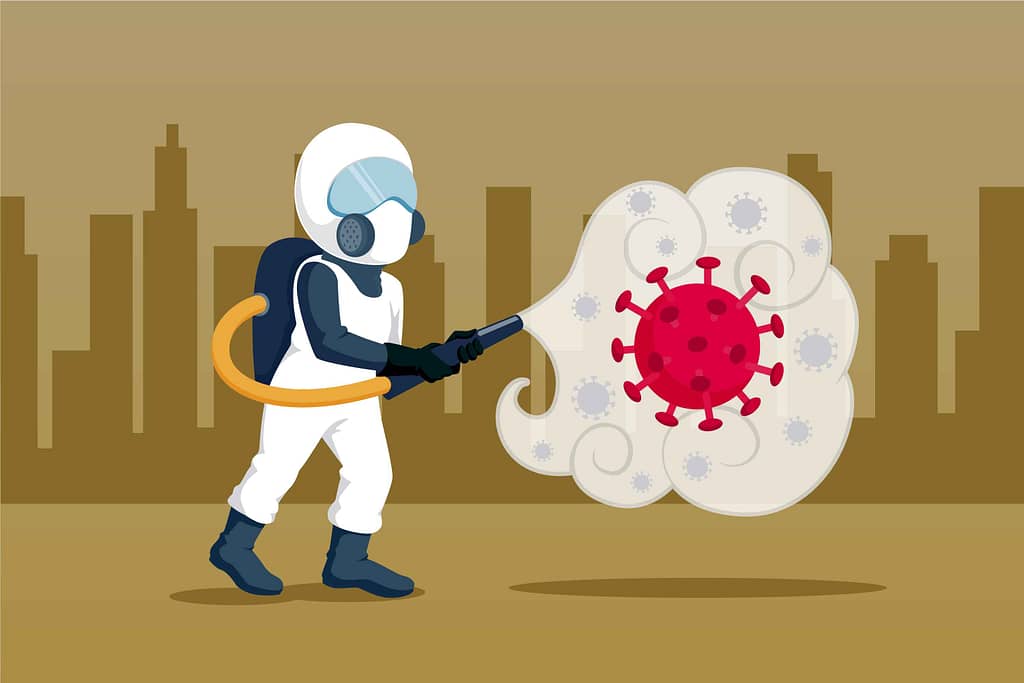Bubonic Plague Returns: Rare Death Reported in US State
A disease from the annals of history, long thought conquered, rears its head once more in the heart of the modern United States. It’s the bubonic plague, a name that conjures images of medieval horror. Yet, here it is again, a rare and chilling occurrence in our contemporary world. This article delves into the recent case of bubonic plague reported in a US state, shedding light on its rarity, historical significance, medical insights, and the response it has triggered from public health officials.
Historical Context
The bubonic plague, famously associated with the devastating “Black Death” of the 14th century, remains one of history’s most haunting pandemics. During this dark era, the plague spread across continents, causing widespread death and societal upheaval.
Fortunately, in the centuries that followed, advancements in medicine and public health brought about significant progress. Through scientific breakthroughs and improved hygiene practices, developed nations largely eradicated the plague. What was once a terrifying threat became a distant memory, relegated to history books.
However, despite these achievements, the bubonic plague has not disappeared entirely. Occasional cases still arise, serving as reminders of the ongoing risk of infectious diseases. The recent resurgence of the bubonic plague in the US highlights the need for continued vigilance in the face of emerging health challenges.
News Report
In New Mexico, a recent death from the bubonic plague marked the state’s first human fatality from the disease since 2020. The New Mexico Department of Health confirmed the news, revealing that a man, whose identity remains undisclosed, succumbed to the ancient illness. According to reports, the man was initially hospitalized after contracting the disease and eventually passed away in the hospital.
State Public Health Veterinarian Erin Phipps expressed condolences to the family of the Lincoln County man and emphasized the ongoing threat posed by the bubonic plague. Phipps stressed the importance of community awareness and proactive measures to prevent its spread.
The circumstances surrounding how the man contracted the disease remain unclear, adding to concerns about potential sources of exposure. While the state’s last human plague death occurred in 2020, the health agency reported the most recent case in Torrance County in 2021.
The bubonic plague, historically known as the “Black Death,” is caused by the bacterium Yersinia pestis. It is primarily transmitted through flea bites or contact with infected animals, particularly rodents. Symptoms of the plague include fever, swollen lymph nodes, and flu-like symptoms. Despite being rare today due to medical advancements and improved sanitation, isolated cases of the bubonic plague still occur, serving as a reminder of the importance of vigilance and swift action in containing outbreaks.
Efforts to prevent the spread of the bubonic plague include avoiding contact with wild rodents and their fleas, using insect repellent in endemic areas, practicing good hygiene, and promptly seeking treatment with antibiotics if exposed or experiencing symptoms. Surveillance and control of rodent populations in affected regions also play a crucial role in minimizing the risk of outbreaks.
Medical Insights
The bubonic plague, caused by the bacterium Yersinia pestis, is a severe and potentially deadly infectious disease. It spreads primarily through the bites of infected fleas, often found on rodents like rats. Humans can also contract it through direct contact with infected animals or their bodily fluids.
Symptoms typically appear within two to six days after exposure. They include fever, chills, headache, muscle aches, and the development of painful, swollen lymph nodes, known as buboes. In severe cases, the infection can spread to the bloodstream or lungs, leading to septicemic or pneumonic plague, both highly contagious and potentially fatal conditions.
Treatment involves prompt antibiotics like streptomycin, gentamicin, or doxycycline. Early diagnosis is crucial for a successful outcome.
While historically significant, bubonic plague cases are rare in modern times, especially in developed countries. This rarity is due to improved sanitation, rodent population control, and the availability of antibiotics. However, outbreaks can still occur, particularly in regions with poverty, overcrowding, and ecological disturbances.
Dispelling common misconceptions is vital. Some believe the plague is a thing of the past, but cases still happen globally. Others think it’s only spread by rats, but fleas are the main carriers to humans.
By raising awareness and addressing misconceptions, public health efforts can focus on prevention, early detection, and treatment, reducing the impact of this ancient but still relevant disease.
Causes of Bubonic Plague:
- Bacterial infection: Yersinia pestis
- Transmission via flea bites or contact with infected animals.
- Poor sanitation and hygiene conditions
Precautions Against Bubonic Plague:
- Avoid contact with wild rodents and their fleas.
- Use insect repellent in endemic areas.
- Practice good hygiene, including regular handwashing.
- Prompt treatment with antibiotics if exposed or experiencing symptoms.
- Surveillance and control of rodent populations in affected regions.
Public Health Response
In light of the reported case of bubonic plague, public health authorities have swiftly taken action to contain the spread of the disease and protect public health.
Increased Surveillance:
– Health departments have stepped up surveillance efforts in the affected area. They’re conducting thorough investigations to identify potential sources of exposure and trace contacts of the infected individual.
– Monitoring of rodent populations and flea activity has been intensified to detect any signs of plague transmission among local wildlife.
Sanitation Efforts:
– Sanitation measures have been ramped up to minimize human-flea interactions and reduce the risk of plague transmission. This includes targeted rodent control and sanitation campaigns to educate the public on proper waste management.
– Public areas and nearby residential areas are undergoing rigorous sanitation to lower the risk of further transmission.
Public Awareness Campaigns:
– Comprehensive awareness campaigns are underway to educate the community about bubonic plague symptoms and the importance of seeking prompt medical attention if exposed.
– Informational materials are being distributed to raise awareness about preventive measures and encourage community participation in disease prevention.
Importance of Early Detection and Prompt Treatment:
– Early detection and timely treatment are emphasized in containing the spread of bubonic plague. Healthcare providers are urged to consider plague in patients with compatible symptoms, particularly in high-risk areas.
– Rapid diagnostic testing and access to antibiotics are critical for effective treatment and infection control.
Guidance for Individuals:
– People in or visiting high-risk areas are advised to take precautions, like avoiding contact with wild rodents and using insect repellents containing DEET.
– Practicing good hygiene, such as frequent handwashing, further reduces the risk of plague transmission.
By implementing these measures and fostering community engagement, public health authorities aim to mitigate the impact of bubonic plague and prevent further spread. Collaboration between healthcare providers, public health agencies, and the community is key to managing this ongoing threat effectively.
Conclusion
The resurgence of the bubonic plague in the United States serves as a stark reminder of the ongoing threat posed by infectious diseases, even in our modern times. While rare, this event highlights the critical importance of remaining vigilant and proactive in protecting public health.
Beyond the immediate concern of containment, the return of the bubonic plague underscores the need for strong surveillance systems, effective communication between health authorities, and coordinated response efforts. These measures are essential for minimizing the risk of further outbreaks and ensuring the safety of our communities.
Crucially, the cooperation and involvement of the public are key in preventing the spread of diseases like the bubonic plague. By following preventive guidelines, staying informed, and seeking timely medical assistance when needed, individuals can significantly contribute to disease control efforts.
As we reflect on this concerning event, let us draw upon the lessons of history and prioritize resilience, preparedness, and unity in our response to public health challenges. By learning from past experiences and working together, we can better protect ourselves and future generations from the devastating impacts of infectious diseases.
Additional Resources
For more information about the bubonic plague, its history, and current developments, consider consulting the following reputable sources:
1. Centers for Disease Control and Prevention (CDC): [Bubonic Plague Overview]
2. World Health Organization (WHO): [Bubonic Plague Fact Sheet]
3. National Institutes of Health (NIH): [Bubonic Plague Information]
4. Mayo Clinic: [Bubonic Plague Overview]
For local support and guidance on infectious diseases, please contact your nearest health department or relevant organizations:
– New Mexico Department of Health: [Contact Information]
– Lincoln County Health Department: [Contact Information]
These resources offer valuable insights and assistance regarding bubonic plague and other infectious diseases. Stay informed and stay safe.
FAQs About bubonic plague
- What is the bubonic plague?
- The bubonic plague is a bacterial infection caused by Yersinia pestis, primarily transmitted through flea bites.
- What are the symptoms of bubonic plague?
- Symptoms include fever, swollen and painful lymph nodes (buboes), chills, headache, fatigue, and muscle aches.
- How is bubonic plague transmitted?
- Bubonic plague is transmitted through flea bites from infected rodents or direct contact with infected animals.
- Is bubonic plague contagious between humans?
- While human-to-human transmission can occur through respiratory droplets, it’s less common than flea transmission.
- Where is bubonic plague commonly found?
- Bubonic plague is endemic in certain regions of Africa, Asia, and the Americas, particularly in rural areas with poor sanitation.
- Can bubonic plague be treated?
- Yes, bubonic plague can be treated with antibiotics if diagnosed early. Prompt treatment is essential to prevent complications.
- How can I protect myself from bubonic plague?
- Avoid contact with wild rodents and their fleas, use insect repellent in endemic areas, practice good hygiene, and seek medical care if exposed.
- Are there vaccines available for bubonic plague?
- Currently, there are no widely available vaccines for bubonic plague. Prevention focuses on avoiding exposure and prompt treatment.
- What are the complications of bubonic plague?
- Without prompt treatment, bubonic plague can lead to septicemia, pneumonic plague, or systemic organ failure, which can be fatal.
- Is bubonic plague still a threat today?
- While rare, isolated cases of bubonic plague still occur, particularly in regions where it is endemic. Vigilance and public health measures are crucial for prevention and control.




